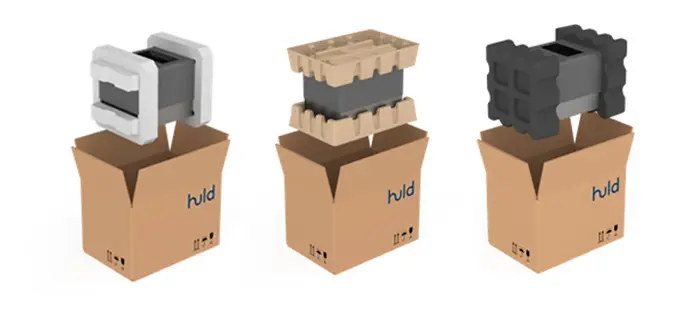Sustainable Product Design
Did you know that 80% of a product’s negative impact on the environment is finalized at the design phase? Or that 70% of a product’s total costs are determined during the design phase?
Did you know that 80% of a product’s negative impact on the environment is finalized at the design phase? Or that 70% of a product’s total costs are determined during the design phase?
The design phase is crucial in shaping a product’s environmental impact. By incorporating sustainable practices from the start, we reduce waste, optimize resources, and boost energy efficiency throughout the product’s lifecycle.
Packaging design plays a key role in sustainable product design. By considering packaging early in product development, we can minimize both costs and environmental impact. Even small changes in product mechanics can significantly reduce the amount of packaging needed.
Through innovative design and conscious material choices, we reduce waste, optimize the logistics chain for efficiency, and ensure the packaging’s sustainable lifecycle. These steps align your packaging design with your company’s sustainability goals, making a positive impact on both your business and the environment.

Simulations are a valuable tool for designers to improve various elements of their products, including material consumption, durability and energy efficiency, thereby increasing the product’s sustainability.
Simulations also allow for the safe examination and evaluation of various extreme situations and conditions. They also help to anticipate and resolve potential problems and risks before prototypes are manufactured. This improves product quality and reliability and reduces the need for physical proof samples.
Additive manufacturing is a powerful tool for sustainable product development, optimizing material usage and reducing waste compared to traditional manufacturing methods. By enabling the creation of complex geometries without excess material, this process enhances material efficiency.
Additive manufacturing supports the circular economy by utilizing recycled materials and lowering the carbon footprint through local production, which minimizes the environmental impact of logistics chains.
Unlike traditional methods, 3D printing eliminates the need for separate tools, reducing resource consumption and waste from tool production. Furthermore, 3D printing can deliver the same functionalities with fewer parts, further enhancing efficiency and sustainability. As we all know, the best part is no part!
High-quality, translation-free, and visually appealing technical documentation is vital for optimizing the product lifecycle. It ensures that all stakeholders—from design to end-of-life—have access to clear, consistent, and accessible information.
High quality documentation empowers users to understand and use the product effectively, which not only improves customer satisfaction but also eases the workload on customer support teams.
Technical documentation also has a substantial impact on maintenance procedures, helping users to perform repairs or updates more efficiently, thereby extending the product’s lifespan and minimizing downtime.


Sales Director, Product Design
jasperi.kuikka@huld.io
+358 45 349 0665